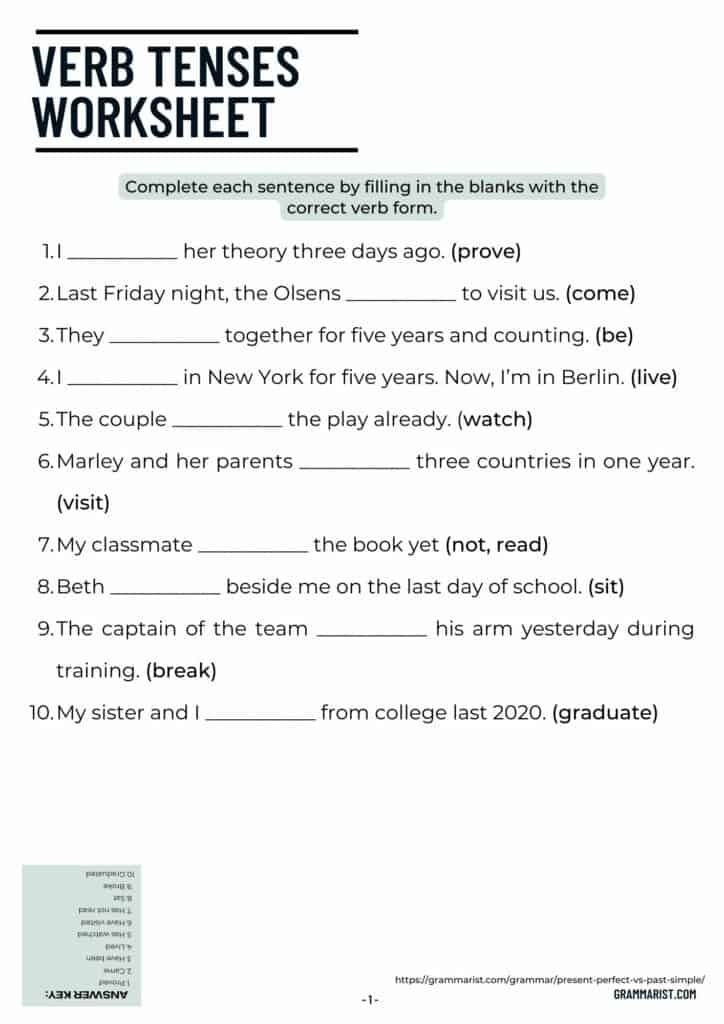Understanding the difference between the present perfect and past tenses is crucial in mastering the English language. Both tenses are used to talk about actions that have taken place in the past, but they are used in different contexts. By learning how to use these tenses correctly, you can improve your communication skills and convey your ideas more effectively.
Let’s explore the differences between the present perfect and past tenses through examples to gain a better understanding of how and when to use each tense.
Present Perfect vs Past Examples
1. Present Perfect: I have finished my homework. (This sentence indicates that the action of finishing homework has been completed recently, but the exact time is not specified. The focus is on the result of the action.)
2. Past: I finished my homework yesterday. (In this sentence, the action of finishing homework is specified to have occurred in the past, specifically yesterday. The focus is on the specific time when the action took place.)
3. Present Perfect: She has visited Paris several times. (This sentence implies that the action of visiting Paris has been done multiple times in the past, without specifying the exact number of times or when exactly it happened.)
4. Past: She visited Paris last summer. (In this sentence, the action of visiting Paris occurred in the past, specifically last summer. The focus is on the specific time when the action took place.)
5. Present Perfect: They have lived in this city for five years. (This sentence indicates that the action of living in the city has started in the past and continues up to the present moment. The focus is on the duration of the action.)
6. Past: They lived in this city when they were young. (In this sentence, the action of living in the city is specified to have happened in the past when they were young. The focus is on a specific period in the past.)
By understanding and practicing the usage of present perfect and past tenses with examples, you can improve your ability to communicate effectively in English. Remember to pay attention to the context and time frame of the actions when choosing between these two tenses.
